#he ended up killing Ganon instead of Link and became the real hero of hyrule at the end
Explore tagged Tumblr posts
Text

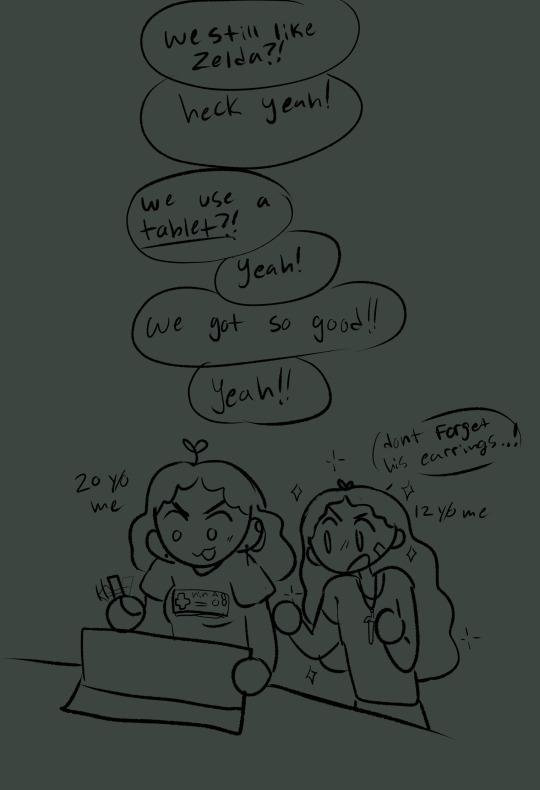
i suddenly remembered a Zelda OC that i made for a fanfic i wrote when I was twelve and had to draw him
#twilight princess#legend of zelda#LoZ oc#ganondorf#this kid was the son of Ganondorf and some random Twili lady#He was supposed to marry Zelda at some point so Ganondorf could get close to the throne but he didnt like the idea#he ended up killing Ganon instead of Link and became the real hero of hyrule at the end#my inner child is so hyped rn
56 notes
·
View notes
Text
The Mask over the Man. The Demon over the Beast. Majora over Ganon.
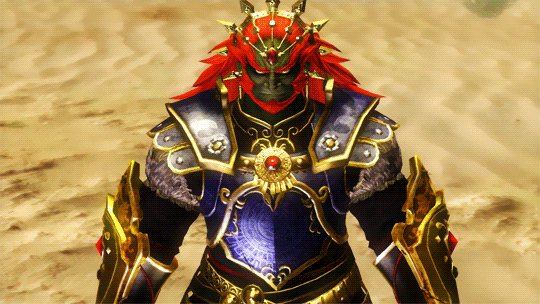
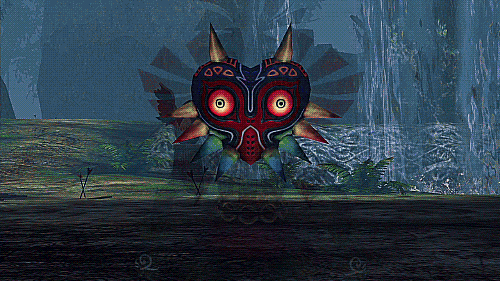
I love both these villains. The N64 was my first console I delved deep into, and Ocarina of Time and Majora’s Mask introduced me to two of my favourite villains in gaming. Today though, I want to delve into why I see one of these characters as the superior ‘villain’. Just my opinion, but I hope to share my case strongly and passionately. I’ll go over each character, than why I believe that one reigns over the other, even if ever so slightly.
Ganon
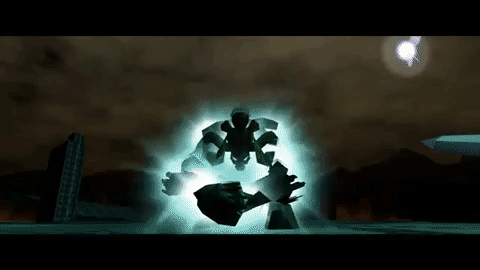
The King of Evil. The King of Darkness. And the Great Calamity of Hyrule. I love the pig demon. His constant presence in the Legend of Zelda series cannot be ignored. Gameplay wise, he can be so much fun to fight against in the final battle for the sake of the world. Doesn’t matter if you fight him as a wolf, if he’s a wizard, or just a mighty beast. Story wise is where a have a slip with him. Ganon set the standard for me in the ‘Dark Lord’ archetype, however, he can sometimes feel simplistic in that regard, simply wishing to conquer the world. And as the beast, barring perhaps Link to the Past, he lacks any real character. It’s also unfortunate that most of the time you meet him, you defeat him immediately afterwards. The best he’s ever been as a threat to me, was in Breath of the Wild.
Calamity Ganon
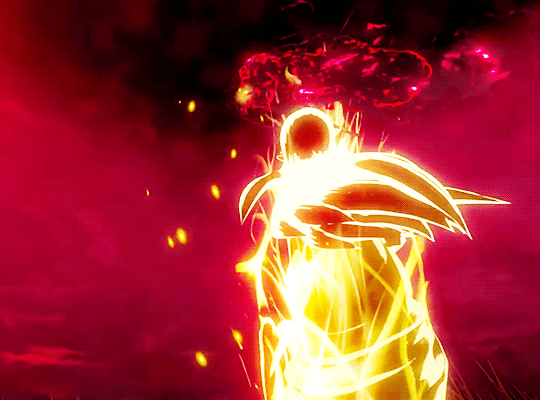
This is Ganon as almost a force of nature. No real conscious we can see, having thrown away any shell of a man for hatred and malice. What really makes this Ganon work, is the relationship you *rediscover* with the old champions, and feeling the heartache at knowing they’re dead. The fact that it festered in Hyrule for over a century, is highly impressive. But the biggest complaint people had (and why everyone is going crazy over the mummified corpse of MummyDorf) is that because Calamity Ganon was just pure hatred, we lacked the relationship of the three Triforce users seen in past games. Which leads me talking about the man, the legend, the best part of Ganon.
Ganondorf
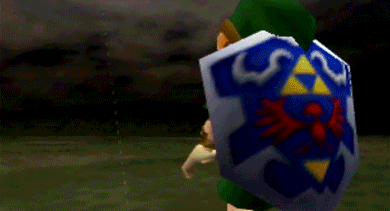
Making Ganon into Ganondorf did wonders for the character. His goals became more relatable, because we as humans can relate with another human being, or at the very least, understand the goal. Hailing from the Gerudo desert, there are two Ganondorf’s that I want to pick out. The Wind Waker split, and the Twilight Princess split. In Ocarina of Time, Ganondorf is the best evil conquer he’s ever been, even without the long locks of Hyrule Warriors. He set out with a long purpose goal to take the Triforce and conquer the world. And he was the main focus as a villain. Ganondorf was also young, and brash. He had a flair, which made him a fantastic villain. He truly appeared to be the King of Evil. Upon his defeat, he gave a loud speech of getting revenge, very classic villain monologue. The next game we saw him was Wind Waker. I feel confident in saying that despite not seeing too much of him, this is the best Ganondorf becomes as a character. He’s far more relaxed in his evil plot. The man goes out of his way to make sure his kidnaped girls aren’t hurt, and when dealing with both Link and Zelda, he gets straight to the point with them, yet, he doesn’t kill them. And up until the end, he still has an air of menace when he wishes to be theatric, despite having more experience and wisdom. After the frightful Puppet Ganon fight, you learn why Ganondorf set out for power in the first place. His people suffered under the desert heat of day, and the icy cold nights. In his own words, the winds carried death. His desire for the Triforce was to bring back the old land of Hyrule. Despite what might have happened after he brought back the land, Ganondorf wanted to *restore* the old land of Hyrule from under the sea. That’s almost heroic. You emphasize with him. Which I argue diminished his villainous qualities in exchange for a more flushed out character. He only tries to kill Link and Zelda after his wish is denied and he snaps into insanity.
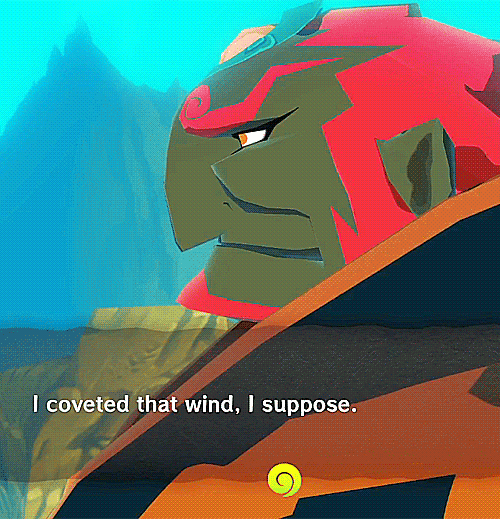
Then there’s Twilight Princess Ganondorf. A really cool Ganondorf. His design is awesome, I love his boss fights gameplay wise and musically, but this is one of the Ganon’s I’d place into the ‘cockblock’ section of Ganons. Real talk, I don’t think I’ve ever mentioned this, but I really like Zant as a villain. He was incredibly intimidating until you face him in the realm of Twilight. His relationship with Midna was interesting, and he carried a cool air not seen before. He was chill... until the very end into his sudden crazy decent. I feel that both Ganondorf and Zant suffer because of the formers sudden conclusion. Each character lost time in the game that could have been used to develop them more. Zant could have had more time to develop into madness as the final boss, or Ganondorf could have been established from the beginning, instead of being diet OOT Ganondorf. His evil goal of placing the world into Twilight didn’t have any drastic changes to the world either. Civilians didn’t even notice the danger they were in. At least OOT Ganon ruled Hyrule for 7 years, and Calamity Ganon was around for 100 years. When Ganondorf takes away time from other villains, it makes him a weaker villain as well. Which is why the Mask stood tall in such a unique story.
Majora
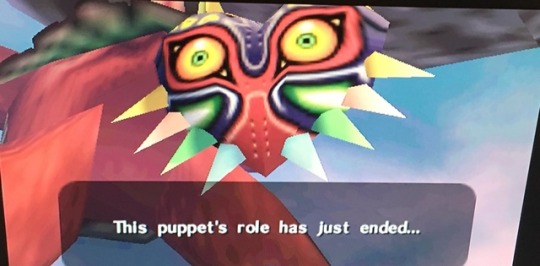
The entity of Majora’s Mask stands out to me as something insidious and inhuman. Unlike Ganondorf, you can’t identify with an unblinking Mask like you can a human being. It stands out as a villain that doesn’t need Ganon in its story or to take his form. The duel relationship with Skull Kid is interesting, as Skull Kid isn’t entirely innocent in his actions, but the transition Majora takes over Skull Kid makes you wonder who’s control until the very end. In my recent play through, I just discovered this, but in Day 1 or 2, the Skull Kid will do a little dance when you spot him in the telescope, and once you look back, he spanks his ass at you and jumps away. However, at Day 3, his head is sideways, looking at you, and constantly twitching, rooted to his spot. It’s like Majora is a drug to Skull Kid that has finally caught up. And that’s a terrible fate to think about.
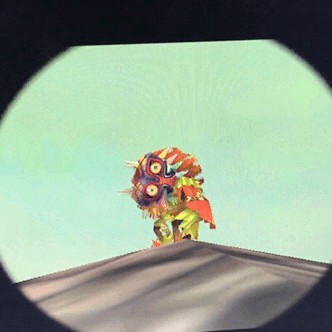
What stands out to me the most about Majora over Ganon, is the stakes as a hero. First, looking at the world. Ganondorf ruled Hyrule for 7 years, yet villages like Kakariko are still around. The world hasn’t been ruined. Even with Calamity Ganon having been around for 100 years, he’s in a prison with Zelda, and civilization keeps ticking by. The moment you enter the world of Termina and you look to the sky, you can see Majora’s immediate tool of armageddon.
The Moon
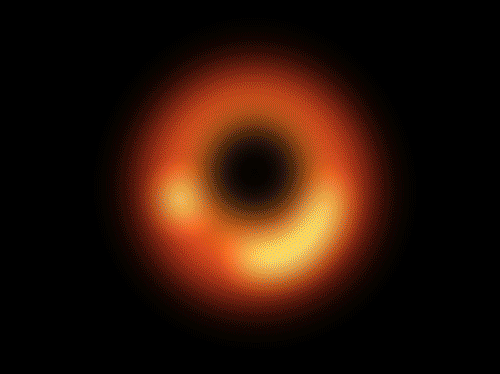
This rock in the sky slowly falls to the Earth over a period of three days. The stakes are felt immediately. You either stop Majora from crashing the moon into Termina, or you burn with the rest of the world. Swept away by a wall of fire compered to an atomic bomb. If the ticking timer doesn’t remind you of your duty, the earthquakes on the third day, then looking to the sky will. Another peek of interest for me in the camp of villainy, is the people you meet along the way. The world of Termina is full of colourful characters that Link meets throughout his adventure. From Tatl to Pamela and her Father, you get heavily invested with them. And they all are aware of the danger of the moon. Almost all are directly or indirectly affected by the Skull Kid and the power of Majora that he immaturely wields. Mikau is killed by Gerudo pirates because they were influenced by Skull Kid to steal the Zora eggs. Areas such as the Woodfall Swamp, Snowhead mountains and Ikana Valley are cursed due to the Monsters Majora unleashes after sealing the giants away. Kafei is cursed into a child directly by Skull Kid and has his wedding mask stolen by a thief as a result. Cremina, god willing that you save her sister Romani from the “Ghosts”, drugs her sister with alcoholic milk so she sleeps through the destruction of the world. The acts of villainy Majora does ripple big and small. With Ganondorf and Ganon, you are given free room to take your time, you lose very little allies, and you have Zelda backing you up most of the time in a battle of destiny. With Majora, however, Zelda is no way involved, many people you meet die and suffer, some you can’t save even with rewinding time, and if you don’t stop the villain, he isn’t going to reshape the world, or control it in his own image, it’s going to destroy it. That is terrifying. Ganon has never truly terrified me. He’s just too human enough, and his villainous acts have never put me on edge. Unlike the champions of Breath of the Wild who you are avenging, the people of Termina are here and now, and that puts so much more tension on me.
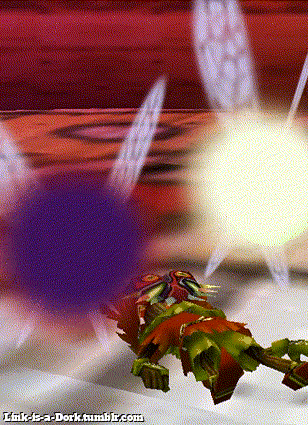
Ganondorf is a great villain, but the inhuman characteristics of an entity that wanted to destroy all left a bigger impression on me. When you finally defeat Majora and save everyone you can correctly and within the time you’re given, including Skull Kid I might add, the credits feel so amazing because you truly saved the world, but more importantly, you saved the people that inhabit it. Defeating Ganon as a villain is a battle of destiny. Defeating Majora is a battle for everyone’s tomorrow.
#legend of zelda#ganon#ganondorf#link#zelda#skull kid#majora#Ocarina of Time#Majora’s Mask#Twilight Princess#Breath of the wild#hyrule#termina#essay#villains#made for all of you#Please comment your impressions#ridersoftheapocalypse#figmentforms#s kinally#love this series
544 notes
·
View notes
Text
Legend of Zelda Lore Tips
So I’ve seen a lot of people confused about how the Legend of Zelda series works in terms of lore. So I’m here to set you straight! You can find the whole thing under the cut.
1: Reincarnation
Despite what most people think, reincarnation only happens once in the Zelda series, during Four Swords Adventure, where Ganondorf is reincarnated as... himself, basically. Thanks to Skyward Sword, we now know:
* Link does not reincarnate, ever. He bears the Spirit of the Hero, some esoteric trait that is passed on from hero to hero, which may just be the approval of Hylia herself. This sometimes carries through his bloodline, but not always. Furthermore, the Spirit of the Hero can be both destroyed, and remade, as seen in The Wind Waker, where Link is not the chosen hero, but a normal child who made himself into the hero. That said, Links usually share some traits, such as having a love of food and sleep. But, as shown in Twilight Princess, they are all different people.
* Hylia does not reincarnate, ever. After the first Zelda died, Hylia returned to her status as a full goddess. Her descendants, the various Princess Zeldas throughout the series, don’t reincarnate either. Every Princess Zelda after the first one (who was the goddess hylia in a mortal body) is a demigod, a mortal descended from a god. Their power comes from this connection to Hylia. Furthermore, as evidenced in the first two Zelda games, it is tradition for the Hyrule Royal Family to name their firstborn daughter Zelda- the Zelda in The Adventure of Link is the aunt of the Zelda from the first game.
* Demise does not reincarnate either. His incarnations bear not his soul or spirit, but his hatred. His “incarnations” are essentially just people whose hearts were corrupted by hatred or evil.
* Ganondorf, as I stated earlier, only reincarnates once. Every other time, he is sealed away, typically returning after his power is regained.
2: The Curse
Despite what many believe, Demise did not lay down a curse after being defeated in Skyward Sword. Fi says as much, his power was gone. Rather, he laid down a prophecy, which he infused with what power he had left to influence, that his hatred would continue on in others, and they would continue to plague Hylia’s descendants and their champions for all eternity.
3: Ganondorf
Despite popular belief, Ganondorf is not Demise’s reincarnation. Neither was he unduly influenced by the prophecy/curse. Rather, Ganondorf was merely an exceptional man born into evil. He is the child of Twinrova, a fusion between two ancient and evil Gerudo witches, and as such, he inherited much of their power. And because they raised him, he became evil. His origin story is no more complex than that; he was simply a man born into power and evil, who happened to fulfill the conditions for the prophecy due to the hatred in his heart.
The only reason Ganondorf has lasted for so long is because he was the only villain to truly grasp even a fraction of the Triforce, which is itself creation given form. By taking the Triforce of Power for himself, his magic and strength were increased to ridiculous levels, causing him to be all but incapable of dying to anything but divine power.
He dies a total of three times across the series- once in A Link to the Past, once in the Oracle games, and once during Twilight Princess. In every other game in which he appears, Ganondorf is never killed, only sealed away.
However, it is clear that, by the time Breath of the Wild takes place, Ganondorf has become a force of nature, and lost what humanity he had left; he is a monster, a miasma of evil energy. This is likely due to him repeatedly dying, as seen in the Downfall Timeline- each time Ganon is resurrected, he loses a small piece of his mind, until he’s completely mindless in Link Between Worlds, used as a puppet by the real final boss to grant them extra power.
4: Timelines
The series is divided into four timelines: a unified timeline beginning with Skyward Sword and ending with Ocarina of Time, and then three new timelines spawned from OoT’s events: the downfall timeline, the child timeline, and the adult timeline. However, the timeline itself is largely just made up after the fact, and aside from a few games, most aren’t made with continuity in mind.
The Downfall Timeline is where Ganondorf defeats Link in their final battle, and a war is raged between the awakened sages and Ganondorf, ending with Ganon being sealed away in the Sacred Realm as a last resort. After spending an unknown amount of time in the sacred realm, Ganondorf’s power transforms it into the Dark Realm, a land of demons and monsters. In this timeline, Hyrule is in a constant state of decline due to Ganondorf’s influence, with monsters becoming more and more common even when Ganondorf isn’t around, to the point where it generally isn’t safe to venture outside by the time the original game comes along.
The Child Timeline is one where Ganondorf’s influence is never truly allowed to spread. However, this also causes Hyrule to slowly lose its magic, and to slowly grow more dependent on technology. By the time Twilight Princess comes along, magic is all but unheard of outside of divinity and the royal family; similarly, the Sheikah, ancient magical protectors of Hylia and her descendants, are all but gone, with only one Sheikah remaining, Impaz. However, it seems to make a small return once Four Swords Adventures comes along, as the four Links find various magical tools and items to help them on their journey. That said, it’s obvious that Four Swords Adventure was just tacked on to the Child Timeline because it didn’t fit anywhere else. Furthermore, Twilight Princess only happens because of how Link was sent into the past; by holding the Triforce of Courage in the future, Link accidentally created a time paradox, which caused himself, Zelda, and Ganondorf to each hold their triforce pieces in the new timeline despite not having split the triforce yet.
The Adult Timeline is a unique one. Hyrule is subjected to Ganon’s reign, but he is defeated by Link. Link is then sent back in time by Zelda, creating the Child Timeline, but the Adult Timeline still exists- and it is without a hero. Link is nowhere to be found, and the creation goddesses instead lead the peoples of Hyrule to the tops of mountains, before flooding it underneath a great sea. Ganondorf is sealed away underneath the ocean, inside the remnants of Hyrule, trapped in a bubble of time as the world moves on. However, Ganondorf’s power was not fully trapped, and he managed to escape after untold years to once more wreak havoc. After he is defeated in the Wind Waker, Link and Tetra move on to explore the world, eventually coming across a continent, which they rename New Hyrule. In this New Hyrule, magic and technology flourish in tandem, causing a technological boom; magical trains become the standard method of transportation, and the royal family itself sponsors it all. However, this land is home to an ancient evil which was sealed away long ago by the Lokomo tribe, a demon king named Malladus; the train tracks that New Hyrule relies on are actually chains which bind Malladus’s prison, which existed long before the people even arrived on that continent.
Finally, there’s Breath of the Wild, which has a unique problem of not really fitting into any of the timelines. It contains elements from every series, and was intentionally created separate from the rest of the series, likely in order to help further separate it from the rest of the series. Breath of the Wild contains many timeline-specific things, including:
* The Rito, which only existed in the Adult Timeline, and which were Zora transformed by the power of a minor god. Some argue that these Rito are not the same due to the difference in design, but the fact remains that they consider Medli to be one of their own, to the point of naming Vah Medoh after her- thus, these Rito must be descended from the Rito of Wind Waker.
* The Sea Zora, which only existed in the Child Timeline. They were transformed into the Rito in the Adult timeline, and were transformed into the monstrous River Zora in the Downfall Timeline. Some people defend them by saying that these Zora are relatively new to the region, but the fact remains that they consider Princess Ruto to be one of their own, to the point where Vah Ruta is named after her; thus, these Zora must be descended from the same Zora found in Ocarina of Time.
* Goponga Island, Kanalet Ridge, Mabe Village Ruins, Martha's Landing, Tal Tal Peak, Tabhal Woods, Ukuku Plains, and Koholit Rock, all of which areas named after places on Koholint Island, in Link’s Awakening, which itself took place on the Downfall Timeline. And Koholint Island is itself not a real place, but rather the dream of the Wind Fish, a place that is presumably never seen in any of the other timelines.
* Linebeck Island, named after a character in Phantom Hourglass, of the Adult Timeline.
* Lulu Lake, Mikau Lake, and Toto Lake, named after characters in Majora’s Mask, which takes place in the Child Timeline.
* Mount Daphnes, named after the King of Hyrule in The Wind Waker.
* Ralis Pond, named after the Zora Prince in Twilight Princess, in the Child Timeline.
* The Tunic of the Wild, which most resembles the clothing of the Downfall Timeline links.
* Vah Medoh, named after Medli (named Medori in the original Japanese), the Sage of Earth in The Wind Waker, found only in the Adult Timeline.
As such, it can be said that Breath of the Wild takes place in a New Unified Timeline, where elements from all timelines existed.
7 notes
·
View notes
Text
Breath of the Wild review
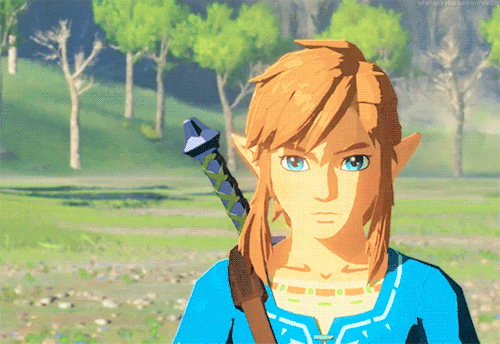
On the Wii U, I had The Wind Waker and Twilight Princess in their HD remastered forms....and barely touched. This is reoccurring issue with me and remasters, even with games I love. No matter how much I loved them the first time, there are some games I won't touch again and it was mainly due to the beginning stages. I dreaded going though Ordon Village again and knowing I'd have to put up with those tutorials again to get to the parts of Twilight Princess i did enjoy. So once Link wakes up Breath of the Wild, gets his clothes and Sheikah Slate and I got to run around with my meager abilities and items, I knew that this game was gonna be a classic. Yes, that's all it took. Now, there have been many many reviews that extolled the excellence of Breath of the Wild, much better written reviews when it came out, possibly on the verge of hyperbolic. So allow me to add to it. And yes, not only is this the best game of 2017, It very well could be one of the greatest of all time. While those reviews have mentioned Witcher 3, Skyrim, Arkham Asylum and other open world games as direct influences (Nintendo said as much as well), this game inspired feelings in me I haven't felt since Xenoblade Chronicles. And like Xenoblade Chronicles, Breath of the Wild succeeded due to not just the high amount of gameplay but also by eliminating a lot of wonky, reductive elements.
There's no invisible barriers that prevents the player from going where they want to go, once you get off the Great Plateau after getting the runes in the Shrines, the player has everything the need to explore this amazing version of Hyrule. And the exploration was felt lacking in previous Zeldas. You knew that special icon or crack in the ground required the player to retrieve the item from a dungeon. Now, you just have to go there and a lot of it just jumps out at the player. This time around, Hyrule itself is a dungeon with so many puzzles that tempt to player to stop moving and just fiddle around for a bit. The world is littered with seemingly out of place shapes and it draws the player in a way that doesn't feel contrived or blatant. And even if a trail isn't apparent or there's no natural way to enter a place, the climbing mechanic breaks all of it. Climbing itself becomes its own minigame because its governed by a stamina wheel and the weather system, which does allow the player to be challenged by where they can climb but it doesn't allow the player to break the game by going everywhere. And speaking of challenge, get ready to eat humble pie with the simplest combat system but toughest enemies ever.
This Hyrule wasn't afraid to hand the player its ass over and over. And the lack of tutorials and locked rooms that teach you to fight means you're not stuck in this one place until you get it right. If you die, you come back and try again or move onto somewhere else to do something that won't kill you. When I tried to put off the story as much as I possibly can, I ended up discovering Shrines (in a minute, not yet), Koroks, rupees, side quests, food. Until I became bored and started the Zora quest line, which delighted because I got to climb up a waterfall with ice blocks and led to the real menace of Hyrule: Lynels. This is when previous Zelda game would put you in this room and turn this into a boss battle to see if the player has gotten any good. Not this time, it didn't care that I didn't have enough hearts, or my shields were too weak, or my weapons were brittle. So I just turn around from the high point and glided to somewhere else instead. While players will have to fight to actually survive, Breath of the Wild let the experience teach the players.
And mainly, those Shrines is how you get experience points. The Shrines are dotted the map, some not even trying to hide, some taking maddening puzzle solving, others rewarding the player for figuring out all the clues. Not only is this how the game facilitates fast travel, it also scratches that dungeon crawling itch for a bit, but only by being a puzzle shrine or a combat shrine. It lacks the incredible intertwining of previous Zelda dungeons but the light content and brain stretching use of items makes up for it. Especially since the player is always rewarded with a great item. Unless its a weapon...
Okay, in the early goings, weapon durability can be a bummer. Weapons break too common and by the time you get used to one, its gone. That's not the worst part of it. The problem comes when good weapons do start becoming more readily available but not you're out of slots because you don't wanna waste your Royal Broadswords on some basic ass Bokoblins because you know a Lynel needs that work more. However, you deal with it because all the puzzle solving and wander lusting led to Korok seeds to expand the inventory, so now by the time you wanna start wrecking things, you're actually equipped to do so this time around.
I also believe that the durability allows the player to actually replay certain areas. While other games use powerful enemies as gates to keep the player away for a few hours, that doesn't feel like it this time around. The map allows players to actually keep tabs on where they may want to go but don't feel like dying to do so. Place that stamp down, go somewhere else and come back to it when the player truly feels ready. I remember Miyamoto talking about how they wanted Zelda games to be able to replay certain areas for a reason. And now they didn't have to force the player to do a bunch of fetch quests or pixel hunts to come back to an area they already beaten. This makes Hyrule feel more livelier this time around because no matter how much time you spent in one area, you can come back to it and discover something hiding under your nose this whole time but you couldn't see it just yet. Or it has a dope sword you really needed but didn't have room for.
But one thing to make room for: food! There was something so hypnotic about resource gathering and cooking, in a way that surpasses Final Fantasy XV's photo-realistic dishes. The abundance of materials, which not only kills the tedium that might have killed lesser games, allows players to actual feel free to consume and experiment with everything they've gathered. In the beginning, basic meals are cooked to give your health a chance withstand raiding an enemy camp. By the time you're in the 100 hour mark, players are hunting to create complex dishes that give them dope buffs to make a play session a more pleasant.
One pleasant thing this go around is the story. For all the flack Nintendo gets for its approach to stories, it only gets it because they're not telling it through the usual cinema envy of other games. This is a deconstruction of Link and being the chosen one. Link isn't just gonna be handed all the tools needed to succeed just because he was chosen. Same goes for Zelda, who seems heartbroken that she has to be the reincarnation of a goddess. And thanks to the Memories questline, you get to see those cutscenes but they aren't automatically triggered because you did a thing. You earn those previous moments beforehand that showed Link and Zelda not truly feeling going along with what destiny wants to do because it worked 100 years ago...which was probably Nintendo's feelings developing this game.
For years, Eiji Aonuma talked about breaking the conventions and in the gameplay and story, that feeling comes across well with Divine Beast Champions, especially who they just fall doing what they were told to do. This is truly about how Zelda's dev team felt about coming together to give the same results, only for it to fail before it even began and the task fell to new people to do what's necessary to defeat Ganon through new means. It's deeply personal and the emotion maturely understated. Link and Zelda develop as legit characters through their struggles and heartbreak and it gives the story an emotional richness not seen since Ocarina/Majora. Link (and the player) truly earns the right to be called a hero, not because he was chosen but because he endured and grew.
I haven't even mentioned how beautiful this game is. Forget your need for 6 billion polygons per sec to animate a face. The details astounding from up close and far away. Climb to the top of the mountain and you see a sprawling, diverse horizon to take your breath away or look down to see a forest or lake or camp to possibly sail down. None of it ever stops looking gorgeous. My favorite place in the game revolved around a Shrine that needed an Orb to unlock but the area you were in was completely dark. Seeing Link as a shadow, lighting torches to move around this area was utterly beautiful and proves that developers don't need to high end CGI cutscenes to make a visual impression that last forever. Speaking of lasting impressions, this is one of the best UI I've seen in a game. It conveys information and stats without completely cluttering the screen and taking away from the game world. Even when playing in handheld mode, you can stil take in a lot of visual treats of Hyrule.
And despite the impression that I'm ready to marry this game, this game isn't flawless. Weapon switch is a legit pain. Holding down one button to switch to a particular weapon isn't as intuitive as the other controls in the game. You're better off just pausing and switching items, which sorta breaks the immersion for the player. Also, as great as the Koroks and Korok puzzles are, did their have to be 900 of them. I'm all for trolling the player and subverting expectations for attempting 100% completion, but 900?!? That quickly veers between padding and repetitive. And the dragons can suck it. Only one item drop per appearance and god help you if you don’t want a scale. Again. Which leads to the upgrade system being underwhelming, due to its limited focus on armor and not weapons.
What makes me ignore these flaws: the game never forces you to do any thing mentioned before this (except the first four shrines and runes). You never have to find a Korok seed (but why the fuck wouldn't you?!?), you never have to expand your health and stamina, you don't need to cook a meal, get the Master Sword, ride a horse, shield surf, regulate your temperature, complete a shrine. The game is indifferent to your progress. But you will do any and all those things because Breath of the Wild is excellent at triggering your curiosity and intellect and rewarding it, not rewarding your patience. Best of all, nearly everything you do fits into a mechanic the benefits the player, the quest aren't just a collection of repetitive checklists of escalating numbers nor is its badly tuned mechanics just thrown for the sake of variety. (Take that, open world games!)
This is not to say the previous Zeldas were awful. They didn't get tens and awards for nothing. You may even miss the linearity. They were great for what they are. Breath of the Wild is just better. Instead of telescoping design and handing you the fun stuff when you did the one thing it told you to do, it trusted the players this time around to make their own fun and build their own legend. Players will end up completing the same things but everyone will make their own path to completion. Breath of the Wild is worthy of the praise it has received and then some. It break ground by avoiding all the pot holes and wasted soil of previous Zeldas and open world games and brought freshnesss that hasn't been felt in years. Truly a game that lives up to the word 'Legend'
2 notes
·
View notes
Text
I’m gonna ramble about Ganon(dorf) for a bit
Proceed if you’re interested (I wrote a lot)
Okay so I don’t even know how to start this, I’ll just go.
(note that I’ll mention the timeline in this, please dont think that I dont know that the timeline could be changed at any moment should nintendo feel ike it, I just like semi-going by currently established canon. Also please note that I got no problem with people who dont feel like following the timeline for any reason, to each their own.)
I kinda really like the fact that Ganondorf is said to be a reincarnation of Demise, because, idk, somehow the idea of powerful demons needing to reincarnate into human form for some reason, and then once they have this form and live that life they start having human feelings and emotions and start struggling with what they want to be and maybe end up becoming good guys, is just somethign I really enjoy.
(If that sounds weirdly specific, Great Demon King Piccolo from Dragonball is one character with that kinda arc that I love.)
And then of course, one of the most interesting things about Ganondorf, imo, is how in the three different timeline branches, you got one incarnation of Ganondorf who turns out very different in each branch.
Something I always like is to just kinda, look at the different “last words” Ganondorf has in each timeline branch, and what they really mean for each of them:
"The wind... it is... blowing."
“I am the Evil King, Ganon...”
“The history of light and shadow will be written in blood!”
(though this gets a bit muddled in the Downfall Timeline, as technically Ganon died in ALttP, but was revived in OoX,´, which I see as his true death for now, but then again we dunno if any Ganons after that where him revived or reborn so *shrug*)
But first we should talk about the guy that “grows up” to be these other three.
I mean, personally I think no matter how you look at it, OoT!Ganondorf did lots of bad stuff, and wasnt a good ruler to the Gerudo (I dont mind different interpretations at all though), but I do think his initial intentions were good like we hear him talk about in WW, but lets not get ahead of ourselves here.
OoT!Ganondorf doesn’t really end up helping the Gerudo once he actually takes over Hyrule (all the Gerudo are still over in the desert, cept for maybe Iron Knuckles) and its heavily implied all the Gerudo were brainwashed to some extent (The carpenters note that the Gerudo seem nicer, post-Twinrova’s defeat), and Nabooru, who was very respected among the Gerudo, was explicitly against Ganondorf, but then brainwashed into submission.
Like even if you think Twinrova did all that without him knowing, not noticing your parents brainwashing your people doesnt exactly make you a good leader.
Adding to that, if A Link to the Past’s backstory is to be believed (and the timeline is not said to split until Link falls in the final battle) then, Ganondorf entered the hiding place of the Triforce alongside fellow thieves of his, and ended up killing them all so he could have the Triforce for himself.
Buuut before you think I’m just gonna talk about how bad OoT!Ganondorf is, like, I still think he genuinely wanted to help his people (at first) and that everything WW!Ganondorf says does represent his true feelings, and that at some point, he just really wanted to do something good.
I think its interesting to think about why that presumably changed for a while, wether you think its the usual getting mad with power, getting to close to the “dark side” or whatever with all the dark magic going on, or being groomed into this role by Twinrova, or all of that, or something else entirely.
I mean, he definitely did some bad stuff before that too, but in the context of Ganondorf being a reincarnation of Demise, I wonder if it could be possible that either seeing Link and/or Zelda or laying eyes on the Triforce ended up having some effect on him, like awakening some part of Demise within him so to speak, contributing to him losing sight of his initial goals and getting more about power in general.
Notably post timeskip Ganondorf seems to use a lot more monsters/dmemons to do his bidding than before, but this could easily just be the difficulty spike for the player.
Idk if this sounds cheap to people somehow, but I remember a popular theory being that the Triforce of Power turned him evil so, its not that different imo.
Of course, in the final battle we see OoT!Ganondorf become Ganon, presumably for the very first time, but honestly? The transformation itself isn’t that important to me, as it just feels like a visual representation of the downfall Ganondorf had undergone already anyway.
And then, when he is defeated, he infamously curses Link, and ZELDA, and THE SAGES, vowing to kill their descendants once he breaks free from the seal and all...
...which leads into who is everyone’s favorite Ganondorf, and rightfully so, WW!Ganondorf.
Before going into the present day of WW, there is its backstory, which is very interesting to me, cause you just gotta think, how do we go from a guy like OoT!Ganon to WW!Ganon?
At some point after OoT but before WW, Ganondorf’s threat became reality, he broke out of the seal and tried taking over Hyrule once more.
But I cant help but wonder how it mustve felt for him. I picture him for years, decades, centuries maybe, sealed away, picturing his revenge, imagining how great it’ll feel to get free and eradicate the descendants of Link and Zelda, and finally making Hyrule his.
But when he was freed, he likely found a Hyrule that was different from how he remembered it. Notably, there would be no hero, nor descendants of his for him to exact revenge upon. And while we know that a princess seems to have had existed at the time, who knows if she was “a Zelda”, if you wanna call them that.
I just imagine it wouldve felt a lot less satisfying that he imagined, heck, probably wouldve felt more like he was robbed if his chance to take revenge.
And who knows what even happened to the Gerudo by that point? I know lack of them in Wind Waker doesnt mean they are extinct, but for all we know they couldve left hyrule altogether? (Like they seem to have done between OoT and TP, and mightve done post OoT in the Downfall timeline, if you dont think they went extinct)
Overall I could see what Ganondorf mightve pictured/wanted to be his most glorious moment, his long awaited return, mightve just ended up feeling kinda empty.
Not that I think he wouldve done a complete 180 already because of that, but I could see it leaving him in a bit of a shock.
Adding to that, now just as he is about to conquer Hyrule for real, the gods decide to destroy it, essentially. Or at least, thats how Ganondorf felt about the situation, given how he speaks of it in the game. Its like the gods are playing with him, everytime Hyrule is just within his graps, they take it from him.
The flood mustve felt especially terrible for him, cause the way he saw it, it mustve been something like the goddesses saying “we’d rather just end hyrule and kill all its people than have you be its ruler”. What a slap in the face, to put it lightly.
After that, getting sealed away again, and all the stuff I mentioned above, probably gave him time and opportunity to reflect upon his life so far, and the future too.
I dont think that in WW, Ganondorf was just “going through the motions”, and just trying to finish what he started because he had no choice at this point. I do think he still genuinely wanted to try and conquer Hyrule, its just that he has had some time to think about it, a bit more about why he wanted it, and about what he did wrong before, and regretting those mistakes.
Like for example, he really doesnt seem like he wants to harm Link and Zelda anymore, if he can help it. He could be hating them, still furious for what happened during OoT, but he doesnt seem to be.
One of these days I wanna talk about all the contrasts and parallels WW seems to draw to Zelda games that came before it, especially OoT, but for this bit I just wanna mention this one thing.
How in OoT you confront Ganondorf, who smugly plays his leitmotif on the organ, the sound of which growing louder the further you approach his chamber. His back pointed at the entrance which he knows the hero will emerge from. Zelda, encase in a crytal, hangs above him like a trophy, like the hero bait she is to him at this point.
And then in WW, his leitmotif plays in his final dungeon, but actually grow more quiet the closer you get to him. That already makes you feel like, while it invokes OoTs atmoosphere, it actually turns it on its head. And then, when you do cofront him, “Zelda” is instead peacefully sleeping in a bed, (presumably Ganondorfs bed?) with him calmly sitting by her side, watching over her. He doesn’t face Link directly as he enters, but isnt completely turned away from his either.
Of course this scene still has some creepy atmosphere to it, especially when he starts reading her mind, but maaaan, the contrast to OoT (and games that came before it) just GETS ME everytime I just think about it.
Ahhh, I could go on and on like, you all know this stuff, you all thought about him in this game so much, didnt you?
I really hope nintendo will choose to give another Ganondorf this kinda depth, and maybe even just play with the idea of Ganondorf taking on a different role than “final boss” in a Zelda title. I would love that.
Now, let’s turn the clock wayyy back to when Ganon fought Link, and talk about the timeline that occurs when Link is actually killed by him.
To me, this is kinda of the “original” timeline, for various reasons, but I don’t wanna distract from our main man here too long.
In this version of the events, Ganon manages to actually aquire the full Triforce in the final battle of OoT, and causes quite a bit of misery before the Sages finally manage to seal him away in this version, too. But because he is so powerful with the Triforce and all that, it ends up costing a lot more lives to finally get to that point.
Now from that point on, this Ganon seems to just kinda rule the Dark World, a twisted “evil” version of Hyrule of his own creation. And of course most notably, either because of this worlds properties, or his general state of being, this Ganon seemingly always stays in beast form from that point on.
Sadly this one doesnt talk too much (though he is very much capable of doing so), so we dont get much of a grasp on his character.
To me, ALttP!Ganon feels like somewhere in the middle when it comes to Ganons. Despite his bestial appearance, he doesnt seem as blind with power and rage as TP!Ganondorf, maybe cause he doesnt call himself a god or something. But he of course is nowhere near WW!Ganondorf in terms of reasons and having reflecting upon his past.
Either way, it is clear that he is not happy with just ruling his very own personal Hyrule, filled with damned people that have become monsters like him, as in ALttP he does attempt to break his seal and go back to the World of Light
This might just be out of greed, but you could also imagine he might simply be unhappy in this demonic world, or even scared? Given how we see that some inhabitants of this land lose their humanity to such an extent that they’re turning into things like trees, maybe even completely losing their sense of self?
One of the more curious things about ALttP!Ganon is his relationship to Agahnim. No one is entirely sure what they are to one another.
In some of the mangas, Agahnim is portrayed as a human who gets possessed or turned by Ganon in some shape or form, and this portrayal is popular from what I’ve seen.
But in the actual game, Agahnim is described as being Ganon’s alter-ego. The term used in the japanese version is “bunshin”, which can mean a lot of things, including alter-ego or even reincarnation, but in the context of the Zelda franchise, there is another part in the series where it is used. In Phantom Hourglass, Oshus is described as being the “bunshin” of the Ocean King. So, if we assume Agahnim works the same way, his consiusness would have to be exactly Ganon’s, right? Of course that doesn’t mean other interpretations can’t exist, I myself am not even sure what to think.
The usage of the word bunshin does imply that to some extent, Agahnim literally was a part, or offshot of Ganon. So froma certain point of view, we could add his character to Ganons, if we wanted to.
Something that intrigues me though is that in the Downfall Timeline, we never see Ganon in human form again. Could this be related to Agahnim? Maybe not exactly literally but symbolIcally?
Did Ganon split the humanity he had left off of himself, because that was the only part of him that could exit the Dark World before the seal was lifted?
If so, did Agahnim dying have any effect on him? Or did whatever Agahnim was in the end just return to him?
So much to think about here, ahh.
Of cours, ALttP!Ganon then gets killed by Link in their battle. Not sealed away, just flat out killed.
Normally this would probably be the end, but of course OoX happened, in which Twinrova tried to revive him, but didnt quite succeed.
Ganon is revived as a seemingly mindless beast, only actualy talking in his final moments, which is the quote from earlier.
In the japanese version, this quote is written entirely in katakana, which can indicate that its pronounced weirdly somehow, in cases like this likely because he had a hard time forming the words at all.
He also refers to himself as a Demon King in japanese, but that term hadn’t caught on in the english versions of the games yet.
Okay so, as I kinda mentioned above, this Ganon’s story gets a bit muddled from this point on.
Sometime after ALttP, but before ALbW, ALbW’s backstory (which is not ALttP) occurs, during which a hero fights a Ganon, who is then sealed away by him, the princess and the sages, but we dont know if this Ganon is the same, just revived again, or an entirely new incarnation.
But you could argue that it hardly matters, cause he barely does anything in the game, essentially acting as a power boost for Yuga...
However, there is a theory that he might do more than that actually.
So, according to this theory, Yuga actually was completely loyal to Hilda, and its only by fusing with Ganon that he starts wanting to betray, due to Ganons influence. The theory is nice in the sense that it makes Yuga more of an opposite of Ganon than he seems if you take the game at face value, and gives Ganon more to do. Depending on your interpretation, Yuga might just be influenced by Ganon, or they literally fuse into a being that is just as much Ganon as it is Yuga.
But of course that is just a minor theory, and you dont have to like it, naturally.
After that we get HF and AoL!Ganon, who is said to be more of a mindless beast as this point, no trace left of the human he used to be.
A rather sad fate.
Again it is unclear if this is the same Ganon, revived yet again, or maybe (anotehr) reincarnation.
But if its the former, you can only assume that, even if you dont think Agahnim dying had any effect on Ganon, just forcing him to ressurect over and over instead of letting him reincarnate properly, must’ve done quite the number on Ganon.
Somehow thinking about this version of Ganon in particular makes me think about the cursed boars in Princess Mononoke, who where lost to their anger. Especially the moment when the Wolf faces the Old Boar, who we have seen slowly lose his self at this point, and she almost pitifully says “Can’t you even speak anymore?” to him.
It almost feels like Downfall Timeline!Ganon is cursed by fate, in a sense. Not really in-universe either, but out of universe too!
History is already written (the first two games are already out) and thus Ganon has to follow the path that is already set for him, become what he will be in the future (what he is in the first two games), a frightening monster that terrorizes this kingdom of Hyrule for the sake of power, with no humanity in him (him having been human wasnt part of his character at the time the first two games where released)
I wonder if the demons failing to get Links blood in 2 will mark the end of this Ganon? (I hope not)
It was kinda nice to see BotW seemingly do somewhat of a modern take on this kinda idea of Ganon, something that has become little more than destruction of Hyrule in pyhsical form. I could see people place BotW as post- AoL for that reason, even.
And well, rolling back time yet again, we go to the last way OoT!Ganondorf turned out, which is TP!Ganondorf...
....who, compared to the others, actually has a bit more of a complicated “set-up” that kickstarts his character.
When Link gets send back in time at the end of OoT, his Tiforce of Courage breaks apart into the pieces we find in WW, presumably because Link was literally removed from that reality as he possessed it?
Then upon his arrival in the new Child Timeline, Link immediately gets the Triforce of Courage of THAT timeline, presumably cause he is in a state of being where he is meant to have a Triforce Piece of Courage?
Well, regardless of what you believe to be the cause, this is what happens, and as a result, the other two Triforce pieces choose Zelda and Ganondorf to bear them and end up residing in them. Thats how the pieces ended up with the three without the Sacred Realm being entered in this version of the events.
Link ends up warning Zelda and the king of the events that will transpire in the future, and thus Ganondorf loses the trust of the king and is unable to set his plan from OoT into motion.
Its a bit vague, but sometime after that Ganondorf starts a direct attack towards Hyrule, but gets captured and put on trial.
And as you know, as he was about to be executed, the Triforce of Power activated and saved him from death.
Now I am not sure if this is true, but I think up until that point, Ganondorf didn’t even know he had it.
But wether he discovered he had it now, or the moment it fist came to him, one thing I am sure of, he mustve felt so great for it. Cause he has no idea that a time travelling Link caused this to happen, right? From his perspective, the power of the gods just came to him like that because he is that great! And then, he cant even die as a result of this? He is literally immortal? Well, he must be the dang chosen one, right?
No wonder he got all god complex in this one!
Something I´m kinda interested in is how this guy spend years, likely centuries, in the Twillight Realm, and if his form in there is any indication, not exactly in physical form either, I mean isnt it implied he HAD to mae use of Zant like that in order to be able to have a physical form like that?
Ultimately TP!Ganondorf just is a lot like OoT!Ganondorf if you think about it, just kinda taken to a more extreme. He is no longer just human, but has transcended humanity much further than OoT!Ganondorf has, and feels superior to everyone because of it.
He is absolute in his own eyes, he is a god, his eventual victory is certain, his battle with the hero just a formality at this point.
And he sticks to that mindset until the very end, even as he is stabbed and fatally wounded by Link. It only makes sense, he couldnt be stopped by this before, why would it stop him now?
Of course the events that follow are rather vague, and people argue about what it means to this day, but I think it ultimately boils down to Ganondorf biting of more than he can chew, overestimating his own power. Or rather, what he thinks is his own power, cause its not even his.
From the moment he was impaled by the sword of the sage, Ganondorf has been a dead man.
He has only been kept alive afterwards through the power of others, the gods, and Zant as well.
This power was not his, and thus it could just leave him just as quick as it came to him.
The imagine of Zant snapping his neck, to me, either just refers to the fact that with Zant dead, who acted as Ganondorf anchor of sorts, Ganondorf himself dies as well, or it refers to the fact that Ganondorf, who saw himself as a god and superior to everything, was ultimately just as much of a mortal and simple being than the very person who worshipped him as a deity the most.
Yes, you could call Zant the very person that made Ganondorf a god in the first place, in more ways than one, so without him, Ganondorf is a god no more. And he dies just like any mortal would.
Ultimately this Ganondorf story feels like a story of hubris.
Simple, but neat.
(Its interesting like, its almost like, TP!Ganondorf was a human who longed to be a god, and WW!Ganondorf was like a god who longed to be human?)
But, do not think it ends here...
We’ve looked at all the people that OoT!Ganondorf grew up to be, but that isn’t all the Ganons there is, the story of Ganon actually continues further down the Child Timeline.
Yes, this brings us to FSA!Ganon, or as I sometimes like to call him, Ganon II.
I understand that most probably never played this game, and I probably won’t blow your minds if I tell you Ganon doesn’t actually do much in this game but, I still like to think about him.
He’s actually a proper reincarnation of TP!Ganondorf, folowing the latter’s death at the end of TP.
From some dialouge in-game we know a little bit about his past. Like his past life, he was a boy born to the Gerudo people, and was named Ganondorf.
Interestingly, in this game, the Gerdudo dont actually say that every 100 years a male child is born, they that every 100 years a “special” child is born, and of course Ganondorf was that special child. They still mention the “only man” part, but it doesnt come up with the “every 100 years” line.
Notably it also doesnt seem that Ganondorf was supposed to be their king, and it doesnt seem like they ever treated him like a king, they only mention he was supposed to be the protector of the Gerudo people and the desert.
This is just speculation, but perhaps, after what happened to the first Ganondorf, the Gerudo people decided it wasnt a good idea to treat the sole male like a king just because.
The Gerudo in the game tell you that the older Ganndorf became, the more twisted and obsessed with power he became, and eventually he started breaking their laws, too.
When he entered the forbidden pyramid, the Gerudo basically considered him banished from their tribe, but also didnt think he would ever survive in there and presumed him to be dead.
The Gerudo in this game really only talk badly about Ganondorf, which probably makes sense if he really just did bad stuff to them, but its a very stark contrast to OoT where the Gerudo seemed to just let Ganondorf get away with everything, kinda.
Something I wonder about if maybe like, Ganondorf wasn’t exactly treated well by the Gerudo, out of fear of him turning out like the old Ganondorf, or if Ganondorf just turned bad all on his own. Or maybe a mixture of both?
What is sorta interesting is the story of how this one came to be Ganon, which is that within the pyramid, he found a certain Trident, which is implied to have caused him to “awake as Ganon”, so to speak, as he picked it up. This is the inscription found with the Trident:
“Seek...you...the world? Seek you...power? Does your...soul...despise peace and...thirst for... more? Does your soul...cry... for...destruction and... conquest? We...grant you...power to ...ruin...the world. The power of...darkness. Evil...spirit of magic trident. You are...the... King of Darkness.“
The trident feels like it has more out of universe meaning than in-universe (though I do headcanon it to be a reincarnated ghirahim somehow, because I can). The trident being a weapon that franchise-wise is heavily associated with Ganon, and notably Ganon only, as Ganondorf is never really seen wielding a literal trident.
This Ganondorf picks up the trident, and with it the legacy of the interpretations of Ganons that came in the games before this one, so to speak.
I´m sorry for this part being so unstructured, but interestingly, Ganondorf is this game is referred to as “ancient demon reborn”, or something like “instrument of evil reborn” in japanese, hinting that even at the time of the game’s release, this Ganon was probably intended to be the reincarnation of a previous evil, likely a previous Ganon, of course.
What I wonder about is how much this Ganon is aware of that, though. When he grew up, becoming more and more twisted, did he know? Did he know he was the reincarnation of a villain that had previously plagued Hyrule? Did he feel his hatred? Did he know whose it was, or did he consider it his own? Or was it simply his own?
And when he picked up the trident, and transformed into a demon beast, did he understand what this meant? What he was? Did he ever obtain any memories of his past self, even?
Something that hints that this /might/ be the case is Shadow Link.
Now Shadow Link is not actually created by the dark mirror from the evil part of Link’s heart as the english localization suggest. Instead its created from the evil part of Ganon’s heart, using the dark mirror. It is said that through the mirror,the hatred and evil of Ganondorf, throughout time, took on the shape of Link. Likely because the hero is a major subject of Ganondorf’s hatred.
The fact that this happened when FSA!Ganon used the mirror, despite himself never having met Link up until that point, hints that he might, at least subconsiously, harbor the memories of his past incarnations?
But really, as usual there is a lot open to interpretation.
I´m just so intrigued, like in this timeline there is a “second Ganon”, a Ganon that came “after”, someone who had to take on this cruel legacy.
And, with that we have now talked about all the Ganon(dorf)s that have existed in the franchise to this day, not counting stuff like BS Zelda and the CDI-Games.
If you stuck around until this point, thank you so much, you’re too kind!
But also thanks to everyone that just skimmed this or looked it over briefly, I hope this wall of text did something for you.
(Sorry for any typos I... type too fast when I get excited about a topic.)
11 notes
·
View notes